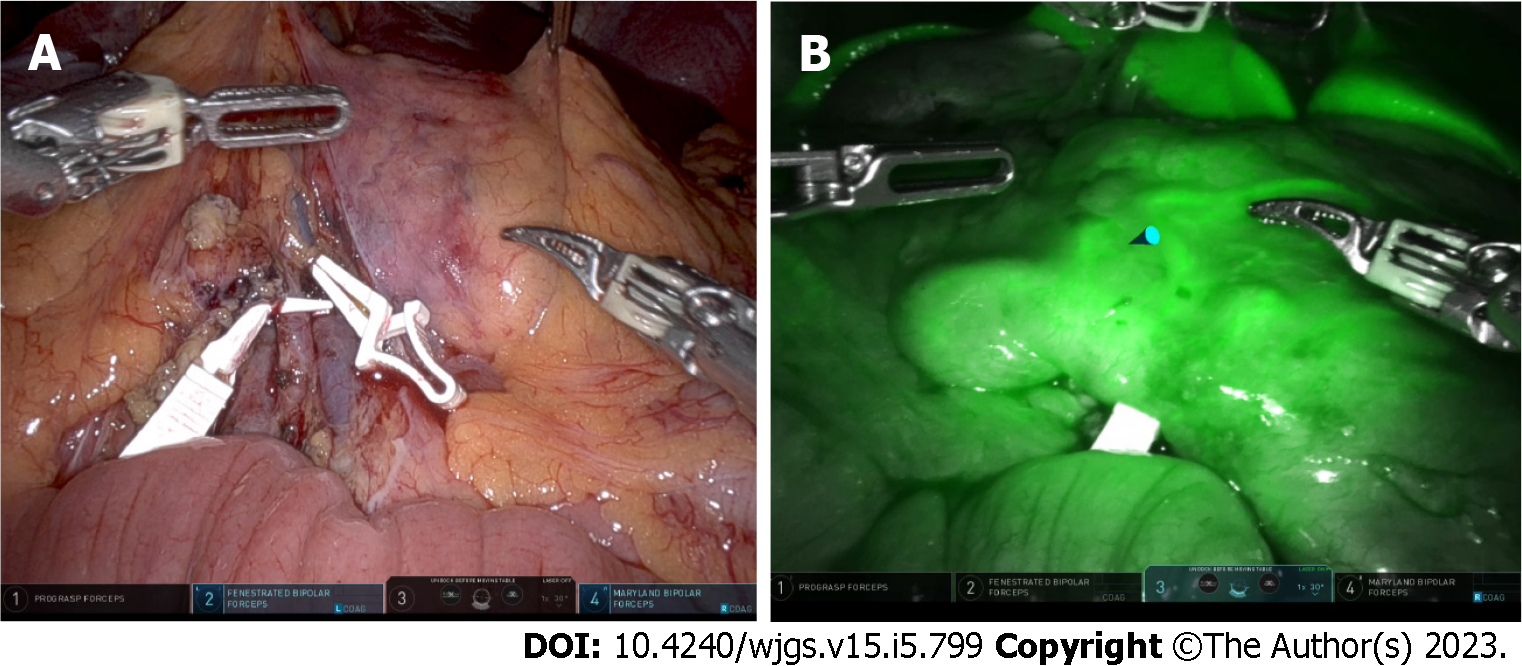Copyright
©The Author(s) 2023.
World J Gastrointest Surg. May 27, 2023; 15(5): 799-811
Published online May 27, 2023. doi: 10.4240/wjgs.v15.i5.799
Published online May 27, 2023. doi: 10.4240/wjgs.v15.i5.799
Figure 1 Laparoscopic mid-colon esophageal bypass.
A: Ileocolic pedicle dissected and bulldog clamp applied (marked with arrow); B: Middle colic artery dissected. Early division of the middle colic artery can be seen (marked with an arrow). Metal clips were applied on the right colic artery; C: Bulldog clamp applied on the middle colic artery proximal to the bifurcation. Middle colic vein draining to superior mesenteric vein seen (marked with arrow); D: The right colic vein (marked with arrow) joins with the gastrocolic trunk; E: Completion of retrosternal tunnel creation guided by assistant surgeon fingers; F: Transfer of colon conduit to the neck through the retrosternal tunnel.
Figure 2 Reconstruction.
A: Cecum and terminal ileum stapled and divided; B: Completed cervical esophago-colic anastomosis; C: Lower end of colon divided with a laparoscopic stapler; D: Stapled cologastric anastomosis; E: Stapled ileocolic anastomosis; F: Completed ileocolic (blue arrow) and cologastric (yellow arrow) anastomosis.
Figure 3 Steps of laparoscopic Billroth I gastrectomy.
A: Line of gastric transection proximal to the level of stricture; B: Completed gastric transection; C: Stapled gastroduodenostomy performed with the specimen in continuity; D-F: Final stapler simultaneously close the stapler entry site and transects duodenum (E) gastroduodenostomy completed using double-stapled technique (F) picture of completed anastomosis in a patient.
Figure 4 Robotic mid-colon esophageal bypass.
A: Bulldog clamps placed on the middle colic vessels; B: Indocyanine green fluorescence demonstrates patent vascular arcade.
- Citation: Kalayarasan R, Durgesh S. Changing trends in the minimally invasive surgery for corrosive esophagogastric stricture. World J Gastrointest Surg 2023; 15(5): 799-811
- URL: https://www.wjgnet.com/1948-9366/full/v15/i5/799.htm
- DOI: https://dx.doi.org/10.4240/wjgs.v15.i5.799












